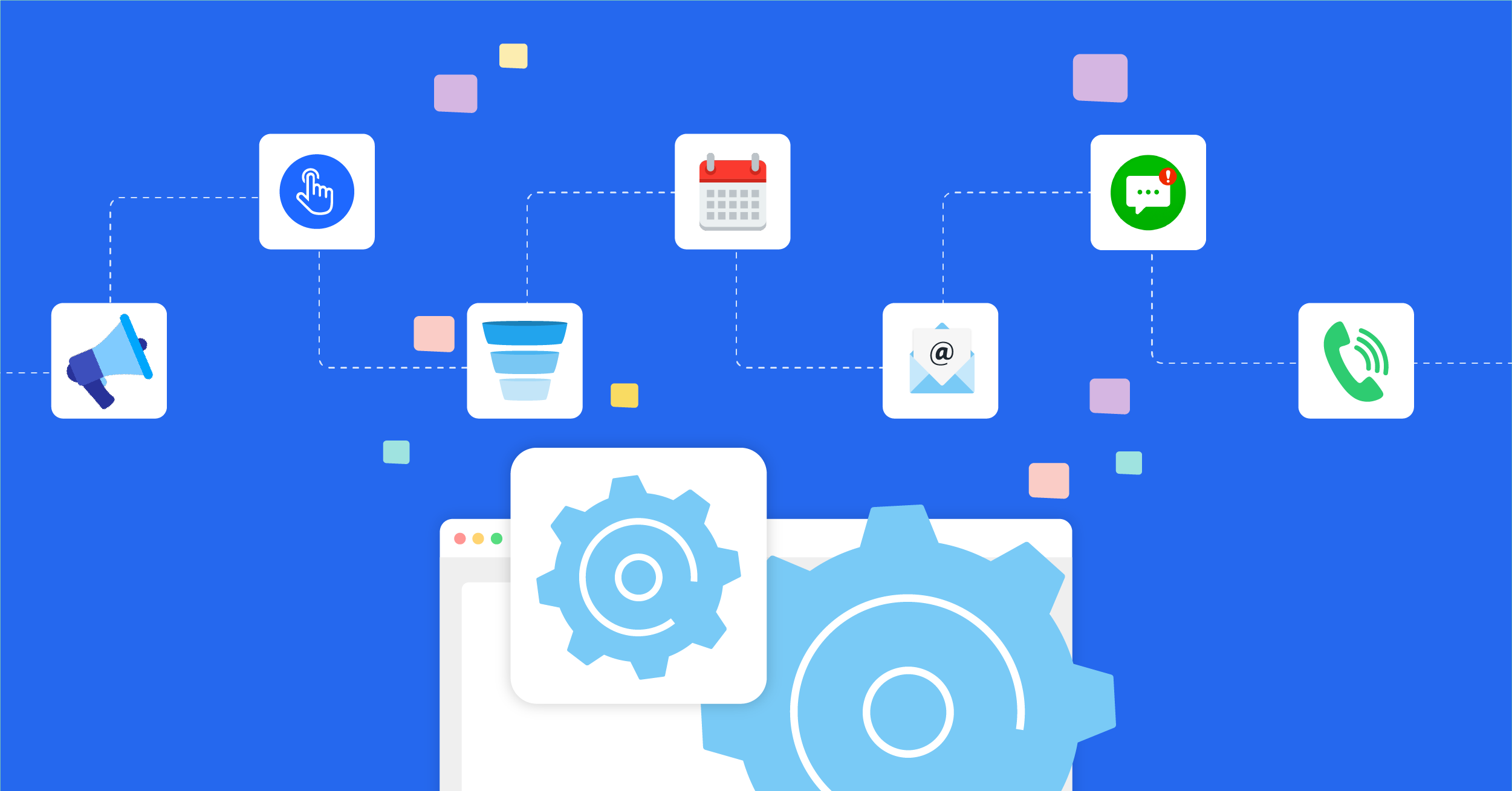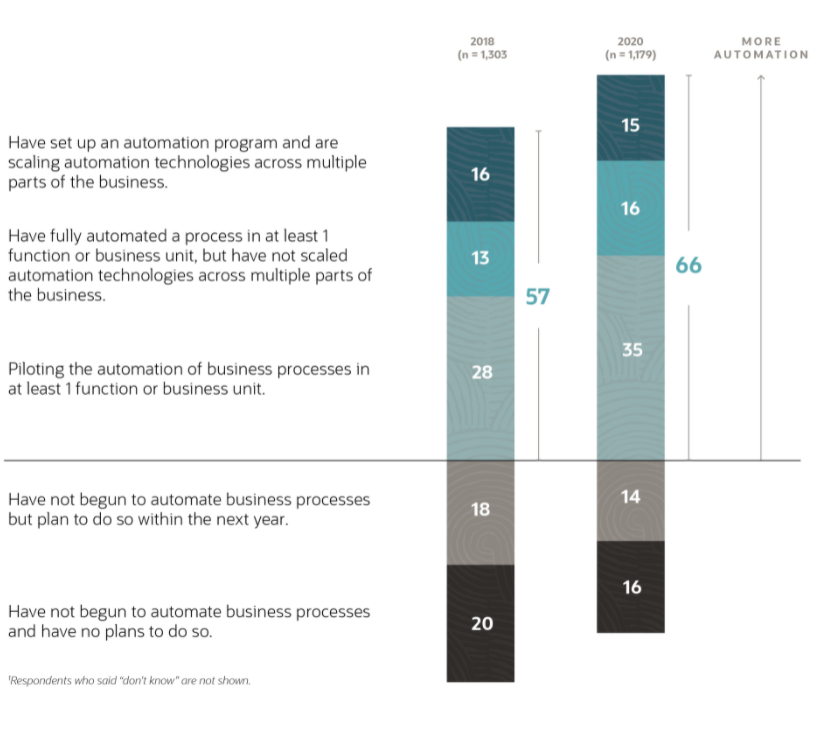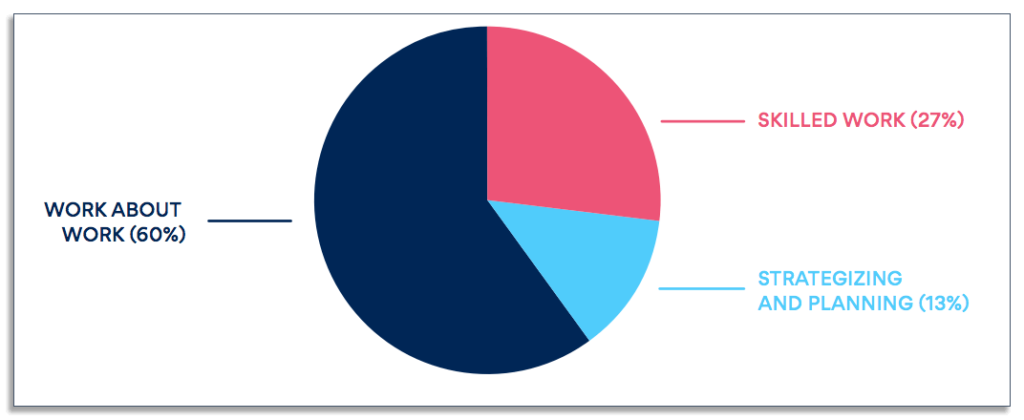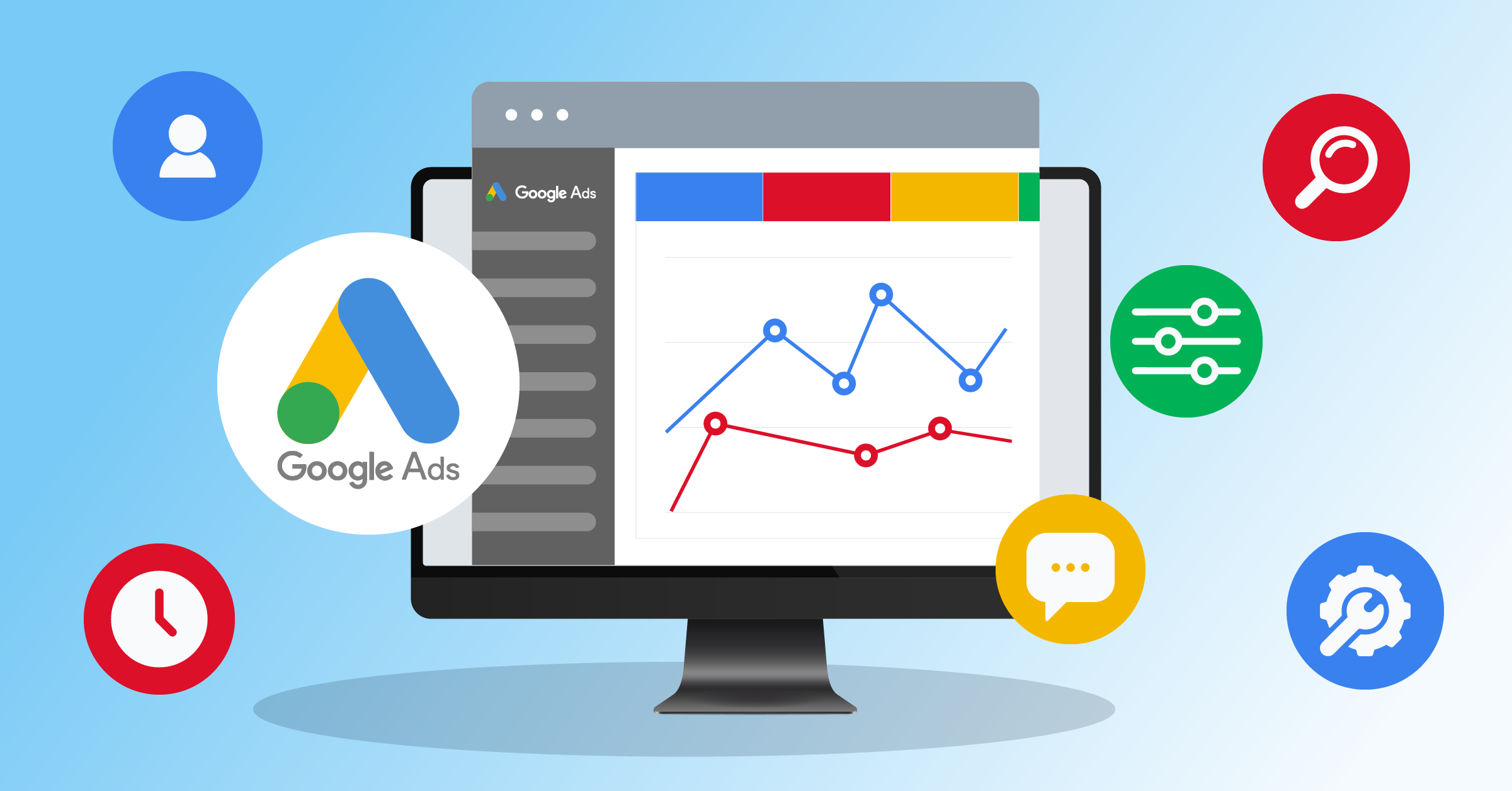
In the business world, there are many things you have to keep track of. Your day can get very busy, very fast, to say the least. That’s why there’s always a constant push to make day-to-day business activities easier. This is where task automation comes in.

The digital age is pushing and almost forcing leaders in their given industries to come up with new and innovative technology to help make the lives of businesses easier. The idea is not to make something (whether that be software, technology, etc.) to do the job for us. Instead, the idea is to make something practical and efficient. Something that helps us get the job done faster.
For some people, task automation means project management software. For others, it means an automatic carwash. The truth is task automation exists in everything we do. Technology has made task workflow easier, but as the world evolves, the need for task automation does, too. The evolution of process automation is changing the world.
What is task automation?
The simple task automation definition is the involvement of technology to aid in completing any given task. Task automation in this sense, is often described as the elimination of the need for human involvement. The more you can eliminate that need, the more the task can be automated, and task workflow can be improved.
This most often manifests itself in automation software, but there are plenty of examples of physical tools that have helped automate tasks. A good example would be a drill. The drill automates by driving a screw into a surface. Or, if we combine both the physical and digital space, a movie theater is a good example.
In the past, if you wanted to see a movie, you had to go to the theater, physically purchase a ticket, and then find your seats. Now, everything is done online. You can purchase your tickets, select your seats, and even put in an order for concessions before you arrive. All of this is task automation because it removes the need for human involvement.
Similarly, payroll automation can reduce errors and speed up processing. Tools that generate a sample paycheck for review before distribution ensure accuracy and transparency for employees, giving HR teams confidence in payroll data.
The truth is that we see task workflow automation everywhere. Whenever there is a task that is made easier, simplified or has the human touch removed (even in the slightest), task automation exists. In businesses especially, there is always a need to automate a task.

As you can see from the chart above, task automation is on a steady rise. As time goes on, we can expect to see the percentage of tasks being automated rise, too. While task automation covers a broad spectrum of business processes, there’s a specialized subset focused on cloud cost optimization. Implementing finops automation in your organization can bring about significant efficiency in managing cloud expenses. By leveraging automated tools designed for financial operations like accounts receivable and accounts payable processes, companies can gain superior resource optimization, real-time cost visibility, and enhanced cost accountability. Learn more about how this specific form of task automation is pivotal for organizations that heavily rely on cloud computing.
Although automation is all around us, today, we will be focusing on digital solutions for task automation. Digital solutions for task automation have paved the way for marketing teams worldwide for years now, and it’s only getting better from here.
How to automate tasks
Task automation isn’t as simple as buying some software. In most cases, it does involve some work to set up. Of course, if done correctly, this can save a lot of time and work in the future. For facility maintenance, task automation can streamline processes such as equipment inspections, work orders, and inventory management, ensuring smoother operations and reduced downtime.
A great example of how to automate tasks is the transfer of data between tools. This can be very labor-intensive, and honestly, a big waste of time. CSV files need to be uploaded manually and repeatedly. But, there is a way to automate this process.
With a tool like LeadsBridge, automation becomes easy to transfer data from something like a lead generation platform to your CRM. Instead of worrying about doing all the work yourself, the task is completely automated once the connection is made, saving a lot of time and effort. All in all, task workflows can be improved with an automation tool like LeadsBridge in the following ways:
Reduction in operational costs
In most cases, automation means task automation software. This means a bigger cost upfront but greatly reduced operational costs in the long run. Tasks that require a lot of human input, like data entry and customer assistance, can be streamlined with task automation software.
Increased reliability
Task workflow automation removes the potential of human error and increases reliability. This is a benefit in itself, but reliability can also lead to some additional benefits like saving time, money, and effort.
Picture it like this: An employee inputs some data that isn’t correct, leading to additional man-hours to correct. This will end up costing everyone additional time and effort, meaning more money. All of this could have been avoided with simple task automation software.
The team’s full potential is utilized
Let’s be honest: wasting time on tasks that could easily be automated isn’t exactly allowing your team to live up to their full potential. With task automation software, you are literally unlocking the ability for your team to do what they do best, utilizing their unique skill set, and putting the company on the fast(er) track to success.
We’ll discuss the LeadsBridge solution in a little more detail below. For now, let’s move on to automating the workflow.
How to automate workflow
When it comes to task automation, workflow is an essential aspect. This is due to the fact that automation can save you a lot of time, and change your workflow management completely.

Essentially, automated workflow is defining a series of steps it takes to complete a given task, and then removing all of the unnecessary, manual steps.
For this process, there are many online tools to help. There are workflow software, task management software, and much more to help you take all that manual labor out of the picture. As a result, there are many things that you can end up saving. Here are a few examples:
HR management automation
Automation in HR management is almost as essential as an internet connection nowadays. HR representatives have a lot on their plate, and therefore have a lot that they might want to automate:
- Overwhelming paperwork
- Onboard new employees and find new candidates much faster
- Enhance workflow visibility
- Job posting and social media recruitment (for the hiring and recruitment process)
- Database recovery to store applications, reports, and analytics from candidates
- Internal mobility and performance reviews
If you’ve ever worked in HR, you’ll know how never-ending this list can be. Part of an HR representative’s job is to adapt to something new every single day. The job is always evolving and changing, producing something new continuously, which is why automation in HR management is essential for those tasks that are guaranteed.
Want to automate your HR and recruitment process further? Check out some of our integrations to get started.
Accounting automation
For most in accounting, the job can get very tedious. Think about it: Accounting records need to be updated, reimbursement claims need to be processed promptly all kinds of reports need to be filed, there’s revenue forecasting and profit margin analysis, and a lot more. It makes sense to have an accounting automation tool that allows you to:
- Simplify documentation
- Shorten approval processes
- Manage auto-deposits for regularly scheduled payments
- Simplify payroll
- Integrate company data with accounting software and tools
For an accountant, accounting automation is a lifesaver. It cuts down on the hours that need to go into small, repetitive, and tedious tasks, allowing them to really put the effort where it matters.
IT automation
Automation ideas in IT are seemingly endless. As long as tech is evolving, automation can, too. As of right now, some of the more common examples of automation in IT are:
- Assigning open tickets to the best available representative
- Evading duplicate requests for support
- Managing scheduled updates and changes with important stakeholders
- Managing data better and keeping track of important usage trends
- Improving resolution workflows through an AI ticketing system that categorizes, prioritizes, and routes issues more efficiently.
In truth, there are unlimited uses for automation in the IT industry. For example, cloud automation has quickly become an industry standard for many businesses that operate online.
Depending on the company, the needs for IT automation can be wildly different. That’s why we here at LeadsBridge offer custom solutions that are unique to that business. No matter how you look at it, IT automation is a huge time saver. For organizations managing complex infrastructure, comparing CMDB tools can help determine which platform best supports automation of asset discovery, configuration tracking, and service dependency mapping.
Sales automation
One of the first things businesses look to improve is their sales process automation. The quicker you can make a sale, the quicker you can move on to the next customer. Ideally, you want to automate the sales process as much as possible without losing the human touch. How is this done?
- Standardizing list building by simplifying the whole process
- Sending and keeping track of promotional, onboarding, and informational emails
- Holding on to leads and nurture them when needed
- Lead scoring
- Data enrichment
In an ideal world, the entire process would be automated, but that’s not how customers work. The most important part of the sales process is typically done through interactions in your CRM. There needs to be a balance between sales process automation and human interaction.
We offer tons of helpful integrations that allow you to connect your CRM to the rest of your marketing stack for full control over the sales process. Want to know more? Check out our CRM integrations.
Marketing automation
A very common question when talking about this subject is whether or not a task should be automated. Although it would be easier if you could avoid doing it manually, is it really worth it?
To answer that question, you must first ask a few questions about the task in general:
- Would it help save time?
- Would it help save money?
- Is there something else that has a higher priority?
- Is the manual aspect of this task complicated?
There are several questions that, if answered yes, could make task automation worth it. Overall, if the task can be completed more efficiently or cheaper, it is generally worth the automation.
As you can see, in every department of a company, there is a way to automate workflow. Depending on the needs of the business, these processes for workflow automation could vary, but these are just a sample of what automation could mean for you.
Being a marketing-specific iPaaS solution, every integration we offer promotes marketing automation. Check out all of our integrations to find out more.
When you should be automating tasks
A very common question when talking about this subject is whether or not a task should be automated. Although it would be easier if you could avoid doing it manually, is it really worth it?
To answer that question, you must first ask a few questions about the task in general:
- Would it help save time?
- Would it help save money?
- Is there something else that has a higher priority?
- Is the manual aspect of this task complicated?

According to research done by Asana, people spend roughly 60% of their time doing what’s called “work about work.” This is work that’s being done simply for the sake of needing to work, not because it’s vital to the company. A lot of time is wasted, and workflow automation helps cut down on that wasted time.
Typically, the more repetitive the task, the more it needs to be automated. Tasks that have the same input and the same output can easily be automated, and therefore should be. If you know that there is a task that needs to be done frequently, then it’s worth automating and freeing up time to do something else.
Task automation: The easy way
As complicated as setting up a task automation process might be, there are a few ways you can make it easier. The best example of task automation made easy is LeadsBridge. With LeadsBridge, you can connect your favorite marketing tools with a few clicks.
Once your tools are connected, LeadsBridge can help generate quality leads, manage your customer data, and more.
Let’s say that you want to gather lead data from an advertising platform like Facebook Lead Ads and send that data to your CRM. With LeadsBridge, that is possible. Instead of manually uploading CSV files, all you need to do is make the connection and gather the leads. LeadsBridge will take any incoming lead data and push it into your CRM so that you can properly nurture the lead all the way through the conversion funnel.

By making these connections, you can use your CRM for proper segmentation and ensure qualitative data hygiene. Of course, this is just one example. There are over 400 different integrations possible with Leadsbridge. This is task automation at its finest.
There are lots of reasons to use LeadsBridge to automate your marketing workflow. To better highlight these reasons, here are some statistics presented by Instapage.com:
- On average, businesses save $130,000 per year in advertising with automation
- Companies that use marketing automation tools see an average of 80% more leads and 77% more conversions
- Task workflow automation has been proven to reduce overheads in marketing by 12.2% and boost sales productivity by 14.5%
Conclusions and takeaways
Task automation has been on the rise since the day the marketing industry began. Innovators and industry leaders are always looking for a way to make their lives easier and help others do the same. With everything above being said, there are many benefits to task automation:
- Reduce overall costs
- Help increase productivity
- Increase availability
- Improve marketing efforts (accuracy and reliability)
- Improve performance across all departments
- Improve focus, drive, and strategy
Of course, depending on the task automation, there could be any number of benefits. It’s all a matter of need, goals, and the results from both. All-in-all, with the right tools at hand, any business can optimize their task automation efforts, increase profitability, and overall avoid the need for repetitive, manual tasks.
Discover how you can further automate your processes with a few simple clicks. Our platform offers an easy connection between many tools in your marketing stack. With over 380 integrations and counting, you’ll be sure to find something to help in task automation.
By making these connections, you can use your CRM for proper segmentation and insure qualitative data hygiene. Of course, this is just one example. There are over 400 different integrations possible with Leadsbridge. This is task automation at its finest.
Conclusions and takeaways
Task automation has been on the rise since the day the marketing industry began. Innovators and industry leaders are always looking for a way to make their lives easier and help others do the same. With everything above being said, there are many benefits to task automation:
-
Reduce overall costs
-
Help increase productivity
-
Increase availability
-
Improve marketing efforts (accuracy and reliability)
-
Improve performance across all departments
-
Improve focus, drive, and strategy
Of course, depending on the task automation, there could be any number of benefits. It?s all a matter of need, goals, and the results from both. All-in-all, with the right tools at hand, any business can optimize their task automation efforts, increase profitability, and overall avoid the need for repetitive, manual tasks.









